Ava and I differ significantly in our opinion on jewelry. I wear a wedding ring and Ava wears layers of necklaces, bangles, and hair accessories. We haven’t yet pierced her ears for fear of what she’ll hang on them.
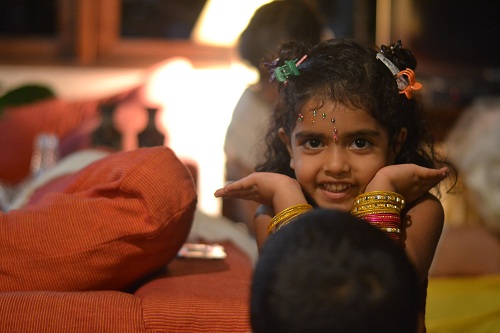
In this way she is much more Indian than me. Indians love jewellery, particularly gold. It’s seen as a sign of wealth and no respectable Indian woman would step out of the house without gold ornaments. My mother’s biggest disappointment in me may be that I show no interest in her jewelry collection. Sandeep’s mother is more polite, saying “Diya is a simple girl.” Luckily they have Ava to hand over their jewelry chests. She already has her hands in them anyway.
Above any other metal or stone, gold is the most revered jewelry in India, particularly in the south. This is how the quintessential South Indian bride arrives at her wedding. It’s not about the dress or the flowers. It’s about the gold.
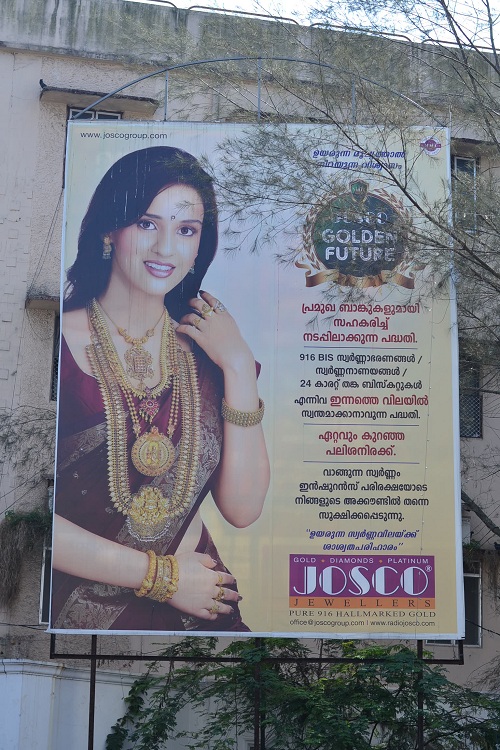
A woman’s wedding jewelry is considered her’s alone. The majority of married Indian women don’t have the independence that comes with their own income, so their gold is a protection of sorts against hard times. Weighed down with gold, an Indian bride has no option but to glow.
India accounts for about 20 percent of global gold demand. It’s seen as a store of value more than an investment. Even as the world economy struggles, in 2011 Indian gold demand was up about 15% in volume. Indians see gold as a good inflation hedge, and have done their part to drive up its value. If the country’s economic growth sustains, greater wealth and urbanization will continue to boost demand.
We paid a visit to Josco, Kerela’s hallmark gold jeweler. Josco has four stores, each of several thousand square feet, in the town of Kottayam alone. The town is only about 1 square mile. When we walked into the store, we were asked what we wanted. The greeter seemed confused about “We’re just looking.” It was clear that the store’s hospitality was highly correlated to the customer’s willingness to buy. Those that were trying things and making selections were offered water. Those that started shelling out money were sipping tea. We were just snapping pictures and asking questions and got nothing but polite smiles and subtle nudges back to the doorway.
Stadium-like seating line each counter, with women perched eagerly along the first row and bored men sitting behind.
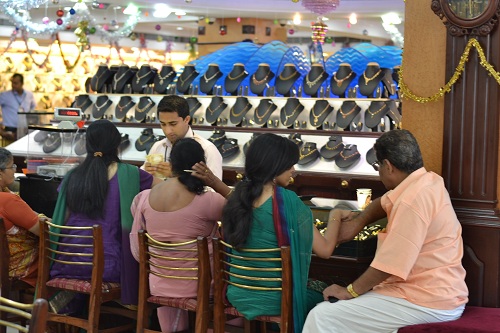
Wedding sets line one wall.
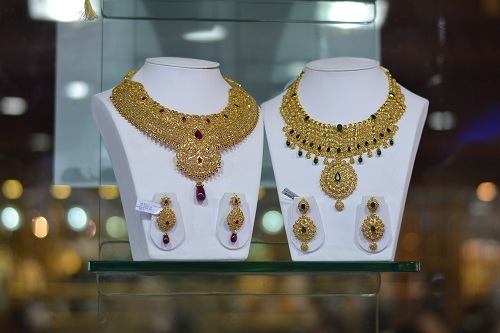
While more simple sets line another. Yes, there are the more simple sets.
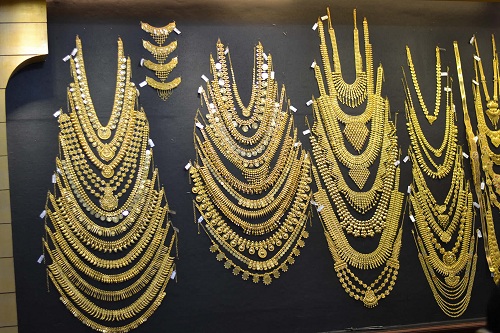
Indians that cannot afford gold store their value in silver. This is very common among rural families who lack access to or trust in banks. Increased wealth leads Indians to gold. Most families now have a portion of savings in the bank and about 10 percent of their overall savings in physical gold. Despite the rapid rise in wealth of the middle class, platinum and precious jewels have not yet taken off. Josco has a section of its store devoted to platinum, but it’s empty.
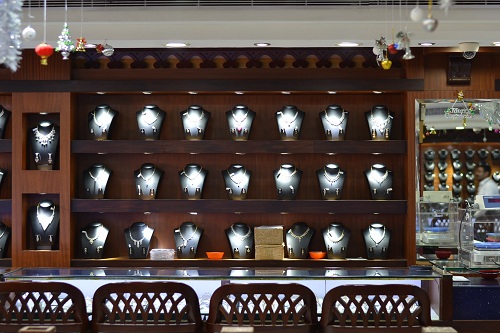
It just proves that all that glitters is gold.

that’s our girl! I’m surprised Ava didn’t empty out her dora the explorer backpack with all her worldly possessions and try and barter with the store owners for some new bling 🙂
I think even she was stunned by the blinding gold!